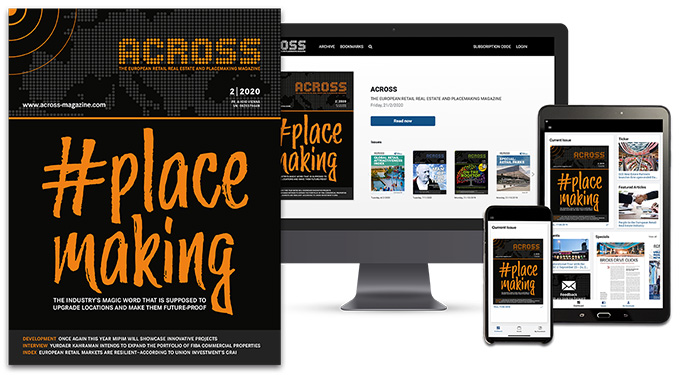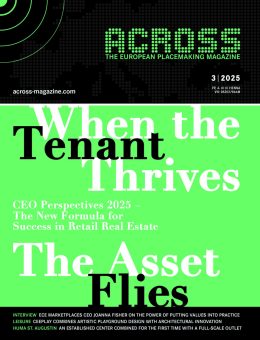BY RAINER KUNDÖRFER
The developer scene has reacted to this declining willingness to expand for several years by offering significantly fewer projects in saturated markets like Germany and Austria. The market’s skepticism also derives from the mediocre success of the majority of the shopping malls that have gone online in recent years.
Should we therefore stick our heads in the sand? Certainly not. But we should be very aware of some lines of development within the market for commercial real estate and draw the right conclusions on both the investor and retailer side.
When buying retail properties, investors naturally expect at least consistent rental incomes and returns. Retailers, by contrast, hope for falling rents in prime locations. The major threat is the disappearance contraction of prime locations, whether in inner cities or shopping centers. What remains is a growing number of the “rest” at B-locations.
Have investors in these cases considered ensuring the sustainability of these acquired properties? It is possible in the foreseeable future that a market with rising interest rates could make it impossible to hand over properties to the next buyer profitably.
It is not only online retail that is leading to reduced space requirements. Retailers’ concept adaptations and shifts in customer preferences when shopping, for example moving towards further significant increases in gastronomy or experiential areas in shopping centers, require a gradual conversion of center structures. This requires new investments in the stock and the acquisition of new tenants.
Retailers are becoming more cautious in their expansion decisions. Internally, more departments are becoming involved in the decision making process and the requirements have become more demanding. Negotiations are taking longer. Retailers often have more time for them and investors’ favored tenants can then secure one monetary benefit or another at the expense of the property’s returns or of other tenants.
How can the knot be unraveled without the sword of Alexander the Great?
Properties must be perfectly aligned to the needs of the environment. Tenants must be selected according to need. The accompanying marketing has to set the strategic positioning and underscore the implementation.
The most important thing, however, will be that both owners and tenants find a way to co-exist that mutually minimizes risk. The times when a partner got what it wanted depending on market conditions by leveraging its own strength with disregard to others should be over. If retailers, particularly anchor tenants, curtail shopping centers’ scope for further investment, they will gain nothing beyond a short-term advantage. Operators setting maximal rents for tenants, leaving them no room for their own gains, is also no way to a permanent balance. Only by working together with mutual understanding can a win-win situation be created. This is especially true for borderline objects, of which there will unfortunately be more and more in the market.
What is your opinion on this topic? Discuss it with us! Send your opinion to opinion@across-magazine.com !






